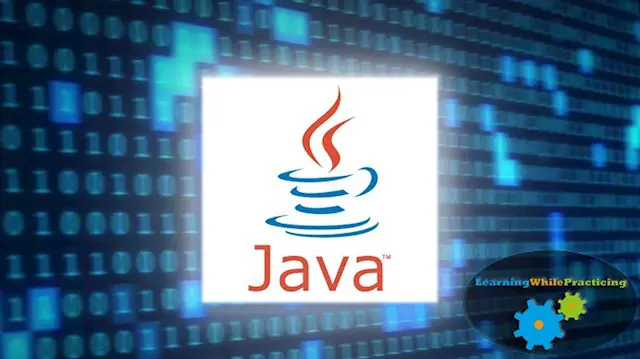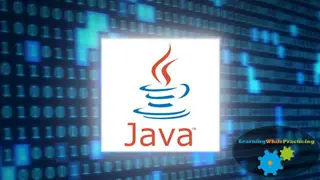
Java: a complete tutorial from zero to JDBC
LearningWhilePracticing
Learn Java programming language from start to finish with Oracle Java certified expert Mr Lawrence Decamora
Add to basket or enquire
Overview
Certificates
Reed courses certificate of completion
Digital certificate - Included
Will be downloadable when all lectures have been completed
Java Certification
Digital certificate - £25
Curriculum
-
Setting up your Java Development Kit 48:38
-
Your First Java Cup 35:50
-
Difference between a Class and an Object 1:28:59
-
Introducing the use of an Integrated Development Environment (IDE) 1:15:18
-
Operators and Control Structures 2:41:50
-
The Reference Data Types 1:05:47
-
Arrays and strings 2:20:16
-
Inheritance and polymorphism 2:05:10
-
Other Class Features 1:21:50
-
Exceptions and Assertions 1:24:28
-
IO and FileIO 1:03:26
-
The Collection and Generics Framework 59:42
-
Building a GUI Based Desktop Application 2:12:07
-
Introduction to JDBC 46:33
Course media
Description
This Java tutorial is made up of 14 sections:
Section 0: Setting up your Java Development Kit
Downloading, Installing and Configuring your JDK
Windows OS
Mac OS
Setting up your IDE
Eclipse
NetBeans
Section 1: Your First Java Cup
How to write your first Java Program --> HelloWorld.java
How to save, compile and run your first Java Program
How to debug a compilation error
The Parts of your Java Program
class
the main method
the System.out.println() method
the (+) operator
the '\n' and '\t' characters
Commonly encountered errors:
Misspelled public class name vs misspelled filename
Misspelled keywords and method names
Incorrect location of your file or your present working directory.
Section 2: Difference between a Class and an Object
How to create an object
Constructors
instance variables
instance methods
How to use / test an object.
Encapsulation (Data Hiding)
Java API Documentation
The import Statement
Section 3: Introducing the use of an Integrated Development Environment (IDE)
Eclipse
Netbeans
IntelliJ
Creating our first Netbeans Project
Comments in Java
single line comments
multi line comments
java doc comments
The Semi-colon;
The { } blocks
Whitespaces
The import Statement
The package Statement
Java Data Types
Reference Data Types (To be discussed in Section 5)
Primitive Data Types
byte
short
int
long
float
double
char
boolean
The Scanner object.
The nextXxx() methods
Section 4: Operators and Control Structures
Operators
Casting
Increment / Decrement (++ / --)
Mathematical (*, /, %, +, -)
Relational (<, <=, >, >=, ==, !=)
Logical Operators (&, |, ^)
Short-Circuit Operators (&&, ||)
Ternary Operators (? :)
Assignment and Short-Hand Operators
Control Structures
if-else
switch-case
while
do while
for loop
nested loops
break and continue statements
labeled break and labeled continue statements
Section 5: The Reference Data Types
Primitive Data Types vs Reference Data Type
User Defined Classes --> Reference Data Types
Assigning References to Variables
Pass by Value and Local Variable Scopes
The this Reference
Section 6: Arrays and Strings
Array Creation and Initialization
Array Limits (.length)
The Enhanced for loop
Copying Arrays
Command-Line Arguments
The parse Methods
Array of Arrays (Two-dimensional Arrays)
Non-Rectangular Arrays
String, StringBuffer and StringBuilder
Section 7: Inheritance and Polymorphism
Inheritance: Classes, Superclasses, and Subclasses
Single Inheritance
The ”is-a” relationship
Java Access Modifiers
Method Overriding
Rules in Overriding a Method
The super keyword
Polymorphism
Virtual Method Invocation and Heterogeneous Array
Polymorphic Arguments
The instanceof operator
Casting of Objects
Overloading Methods
Rules for Method Overloading
Inheritance and Constructors
Overloading Constructors
The Object class (equals(), hashCode() and toString() methods)
The static keyword
How do we access / call a static variable or a static method?
The Math and System Classes
The static imports
Section 8: Other Class Features
The Wrapper Classes
The final keyword
The enum keyword
The abstract keyword
Java Interfaces
The Interface default methods
The Interface static methods
The Functional Interface and the Lambda (->) Operator
Section 9: Exceptions and Assertions
The Exception and The Error class
Why do we need to have Exception Handling?
Sample Exceptions
Java’s Approach, the Call Stack Mechanism
The five keywords used for Exception handling or Exception declaration
General Syntax of an exception - handling block
The try – catch block
The finally block
The Exception Hierarchy in Java
Multiple Exceptions in a catch Block
The parameterized try block
The Handle-or-Declare rule
The throws keyword
Rules on Overriding Methods and Exceptions
Creating your own Exception objects
Assertion Checks
Section 10: IO and FileIO
How to accept inputs using:
The Scanner Class
The BufferedReader and InputStreamReader Classes
How to format an output.
The File class.
How to read and write inputs from and to a File.
Section 11: The Collection and Generics Framework
The Collection Interface
The Set Interface
The List Interface
The Map Interface
The Iterator Interface
The Generics Framework
Creating your own Set of Collection objects
Sorting your Collection
Section 12: Building a GUI Based Desktop Application
The AWT package
Components, Containers, and Layout Managers.
Using selected layout managers to achieve desired GUI layout.
Add components to a containers
Demonstrate how complex layout manager and nested layout managers works.
Define what events, event sources, and event handlers are.
Event handling techniques
Write code to handle events that occur in a GUI
Describe the five (5) ways on how to implement event handling technique.
Converting the AWT code to a Swing application
Packaging a JAR file for application deployment
Section 13: Introduction to JDBC
– Introduction to Database Concepts
– How to Create your first DB Schema
- Basic SQL Statements
- SELECT
- UPDATE
- DELETE
- INSERT
- What is JDBC?
- The Statement Interface
- The PreparedStatement Interface
Each section contains its resources files (codes and notes used by the instructor) which can be found here:
https: // drive. google. com/drive/folders/1qOlopsoFExfLey0jWOv2mQwPIny7bqoN?usp=sharing
===>(No space. Make sure to extract the files)
Whether you're a complete beginner or already got knowledge in Java, this course is for you! Happy Coding!
Who is this course for?
Anyone interested in learning Java
Requirements
NO JAVA KNOWLEDGE IS PREVIOUSLY REQUIRED!
Questions and answers
Do I need any coding experience? Should I do computer science basics first?
Answer:Hello, no coding experience is needed for this course! A little bit of computer science basics however can be very beneficial to get the full potential of this course
This was helpful.
Reviews
Sidebar navigation
Legal information
This course is advertised on Reed.co.uk by the Course Provider, whose terms and conditions apply. Purchases are made directly from the Course Provider, and as such, content and materials are supplied by the Course Provider directly. Reed is acting as agent and not reseller in relation to this course. Reed's only responsibility is to facilitate your payment for the course. It is your responsibility to review and agree to the Course Provider's terms and conditions and satisfy yourself as to the suitability of the course you intend to purchase. Reed will not have any responsibility for the content of the course and/or associated materials.


